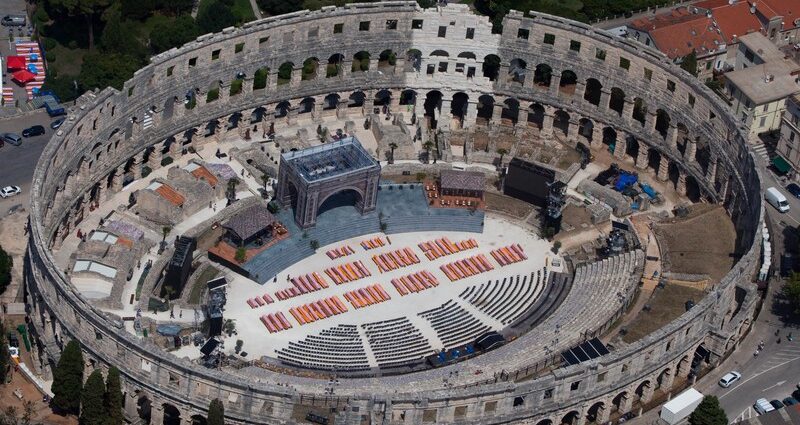Introduction –
Pula is the capital of Istria, one of Croatia’s four historical and cultural regions. It is often referred to as the country’s best-kept secret or it can also be called as Secrets of the Colosseum in Pula Croatia. A bustling coastal town with a protected harbor, fragrant pine groves, seaside cafes, and a plethora of excellent restaurants is at the southern tip of the Istrian peninsula. Istria, which was a part of Italy in the early 20th century between the wars, has stunning views of the Adriatic Sea and is close to the Italian border. It is a picture-perfect city with narrow cobblestone streets that are ideal for getting away and trying the excellent seafood and wine from the area.
Pula Arena –
In any case, dig somewhat more profound into the town’s long and celebrated history, and you’ll find that it has been involved by Romans, Ostrogoths and Venetians, as well as the Partnered Powers in The Second Great War. The Roman Empire is the one that has left the city with the most visible and obvious mark. The Pula Arena is a stunning Roman amphitheatre that was built between 27BC and 68AD. It sparkles like a crown jewel. As if this weren’t impressive enough, it is also the only remaining Roman amphitheatre with a complete circle wall, four side towers, and complete preservation of all three Roman architectural orders.
History of Pula Arena –
The first century AD has passed. What was once an amphitheatre developed of lumber is presently an impressive limestone structure, lodging 20,000 shouting fans inside its three, in-the-round levels. Roman Ruler Vespasian looks on, encompassed by his company, dignitaries and the city’s nearby lead representatives. He takes in the raucous scene all around him as servants bring him meats and wines from the area. Two gladiators are led into the arena after Vespasian gives the go-ahead to the raucous crowd. Blades crush against one another, and the hints of snapping metal on metal reverberation around the theatre. The groans of the gladiators and the roars of exotic animals below are drowned out by the crowd’s applause.
Knights of Malta –
The arena was used for medieval tournaments by the 16th century, with the Knights of Malta competing against one another. More metal-on-metal sounds, but this time not in jousting or mêlées but rather to the death. As you stroll around this historic arena, two thousand years have passed and the spectres of the past have returned. You can nearly contact and feel the set of experiences as you investigate this inconceivable UNESCO World Legacy site. This stunning monument to ancient history is now a more subdued experience on Pula’s historic street.
Concerts & Film Festivals in the Arena –
Film festivals, concerts, opera, ballet, and sporting events are now more common in the arena. The 67th Pula Film Celebration is because of occur in July with motion pictures from around the world, while exhibitions of Puccini’s Tosca and Bizet’s Carmen are likewise planned to happen at the field throughout the late spring months. Additionally, Istria’s viticulture and olive growing exhibitions are held regularly in the gladiator-era tunnels. Even gladiator re-enactments from the past are staged, bringing the past to life with incredible effect and setting the heart racing. Visiting Pula is an unquestionable requirement, however when you’re there each visit starts and wraps up with an outing to the Field.

